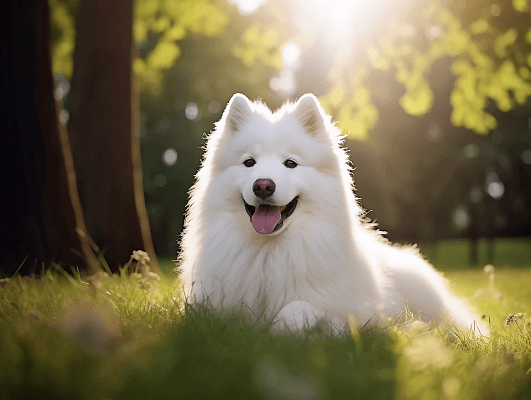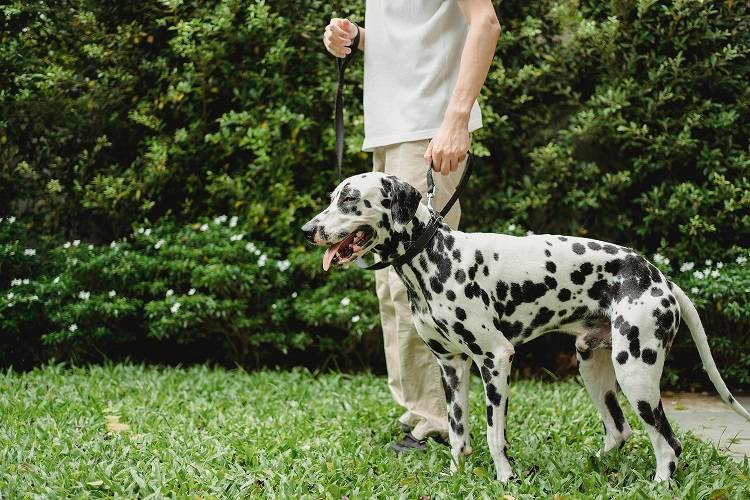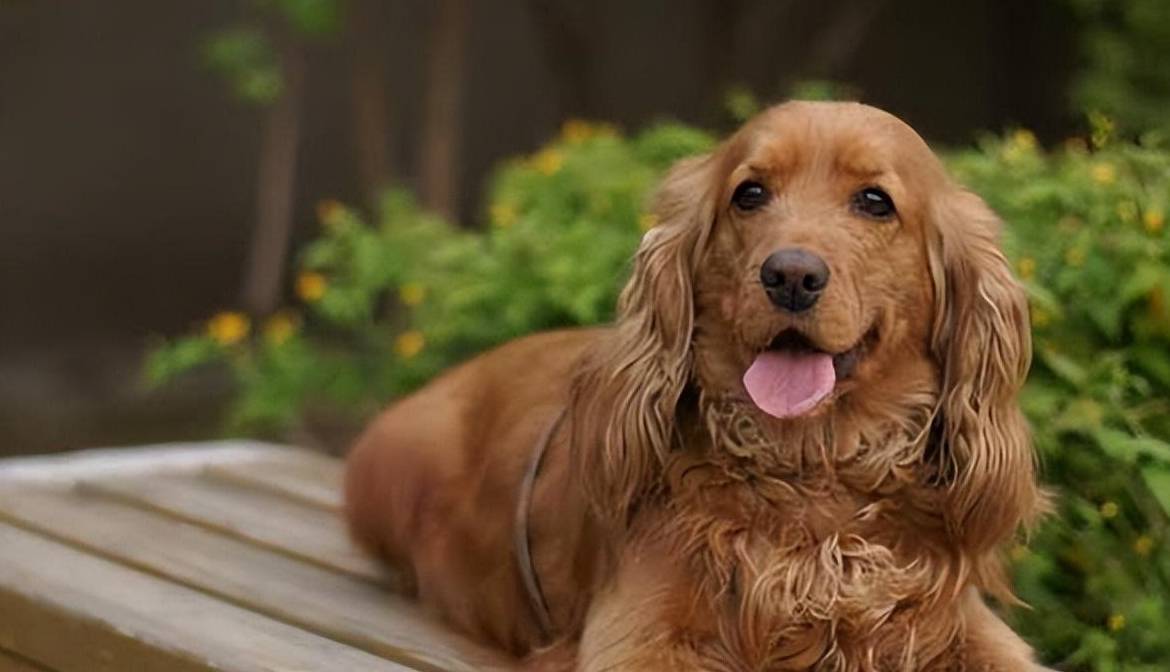Samoyeds were originally bred as working dogs, possessing intelligence, strength, and liveliness. They have thick fur, with males having a more robust “mane,” projecting a powerful appearance. Females exhibit a delicate but not weak demeanor, with a possibly slightly longer back than males. Nowadays, more and more people choose to raise Samoyeds as companion dogs.

The name “Samoyed” originates from the Samoyedic tribes of northern Russia and Siberia. In the southern regions, Samoyeds were used by tribespeople for reindeer herding, featuring various colors. In the northern areas, these dogs were pure white, known for their gentle nature, often employed as hunting and sledding dogs. They formed close bonds with their owners, even sharing sleeping spaces for warmth. In 1889, British zoologist Ernest Kilburn-Scott spent three months with the Samoyedic tribes, bringing back a male puppy named “Sabaka.” Later, he imported a cream-colored female named “Whitey Barsova” from the Ural Mountains’ western side and a snow-white male named “Moustique” from Siberia. These few dogs, along with those brought back by explorers, laid the foundation for Western Samoyeds.
Today, Samoyeds have also become excellent and loyal companions to humans.
3 Morphological Characteristics of Samoyeds:
Samoyeds have a medium-sized, elegant, and charming appearance. Their pure white coat is a significant attraction, and the distinctive “Samoyed smile” is formed by the contour of their eyes and a slightly curved position just above the mouth. While Samoyeds lack strong hunting instincts, they are brave without being confrontational and generally prefer communal living.
- Body Proportion: Length exceeding 5% of shoulder height. The body is slightly lower than half of the shoulder height, and the muzzle is approximately equal in length to the skull.
- Head: Wedge-shaped.
- Eyes: Almond-shaped, well-spaced, and dark brown. Eye rims are black, though some Samoyeds may lack black pigmentation.
- Nose: Preferably black, but pigmentation may fade during certain periods of the year.
- Ears: Small, thick, triangular, and erect (may droop when young but gradually stand upright).
- Hindquarters: Full, strong, and muscular.
- Loins: Short, robust, and well-defined.
- Chest: Broad and deep, extending almost to the elbows.
- Back: Medium length, muscular, and straight; slightly longer in females than males.
- Tail: Set high; when alert or in motion, the tail arches forward over the back or to the side, but at rest, it hangs down, reaching the hocks.
Samoyed coats are extremely dense and flexible, consisting of an underlayer and an outer layer. The tail should be covered with abundant fur, and the texture of the male’s coat is generally shorter but softer than the female’s.
4 Temperamental Characteristics of Samoyeds:
Some owners perceive Samoyeds as lively, energetic, and mischievous. This behavior is attributed to their natural inclination for running and exercise. Samoyeds love and require physical activity for their overall well-being. Keeping them confined indoors for extended periods can be detrimental to their health.
Samoyeds are intelligent, elegant, loyal, and highly adaptable. Their gentle and friendly nature makes them a popular choice among dog owners. While being active, they also exhibit a sense of alertness, friendliness with a hint of reserve, and a strong enthusiasm for service.
Training Samoyeds can be a bit challenging due to their high energy levels. Using stimulating techniques, such as tug-of-war with a leash or enticing with treats, can capture their attention effectively. Their inherent intelligence makes them quick learners, and the right approach combined with their cleverness results in efficient training.
5 Care Tips for Samoyeds:
Due to the thickness of their coat, Samoyeds face challenges in the summer. Owners can take them to grooming salons for appropriate trimming. For larger-sized dogs like Samoyeds, the hair on their paws and ears does not require frequent cleaning compared to smaller breeds with denser ear hair like poodles. However, periodic cleaning (approximately every 7-15 days) is necessary to prevent issues.
In summer, attention to trimming is crucial, but care is required in winter. After bathing, it is essential to blow-dry the coat rather than allowing it to air-dry to prevent skin problems. Though the nails of medium to large-sized dogs do not need frequent trimming due to natural wear during regular walks, occasional trimming is necessary to prevent overgrowth.
Common health issues in Samoyeds include alopecia, diabetes, allergic dermatitis, cataracts, glaucoma, acute glomerulonephritis, and congenital hip dysplasia. Due to genetic factors, some Samoyed puppies may have underdeveloped hip joints. Therefore, attention to various symptoms is crucial, and their diet should be carefully monitored.
6 Feeding Guidelines for Samoyeds:
Avoid feeding Samoyeds excessively sweet foods as diabetes is common in the breed. Given their high activity levels, their diet should have a relatively higher meat content. Due to their skin’s lower resistance, conditions like alopecia and allergic dermatitis are common. Adding vitamin supplements to their diet can enhance skin resistance.
Offering calcium powder as a supplement is advisable to strengthen their bones and improve their movement. When changing their dog food, it is recommended not to switch abruptly, but rather introduce the new food gradually to avoid stress reactions. Stimulating methods, such as using petting gestures before feeding, can encourage them to eat their food as a reward, making training more effective.
In summary, the key to caring for Samoyeds lies in maintaining their coat, ensuring proper grooming, monitoring their health, and providing a balanced diet tailored to their specific needs.




